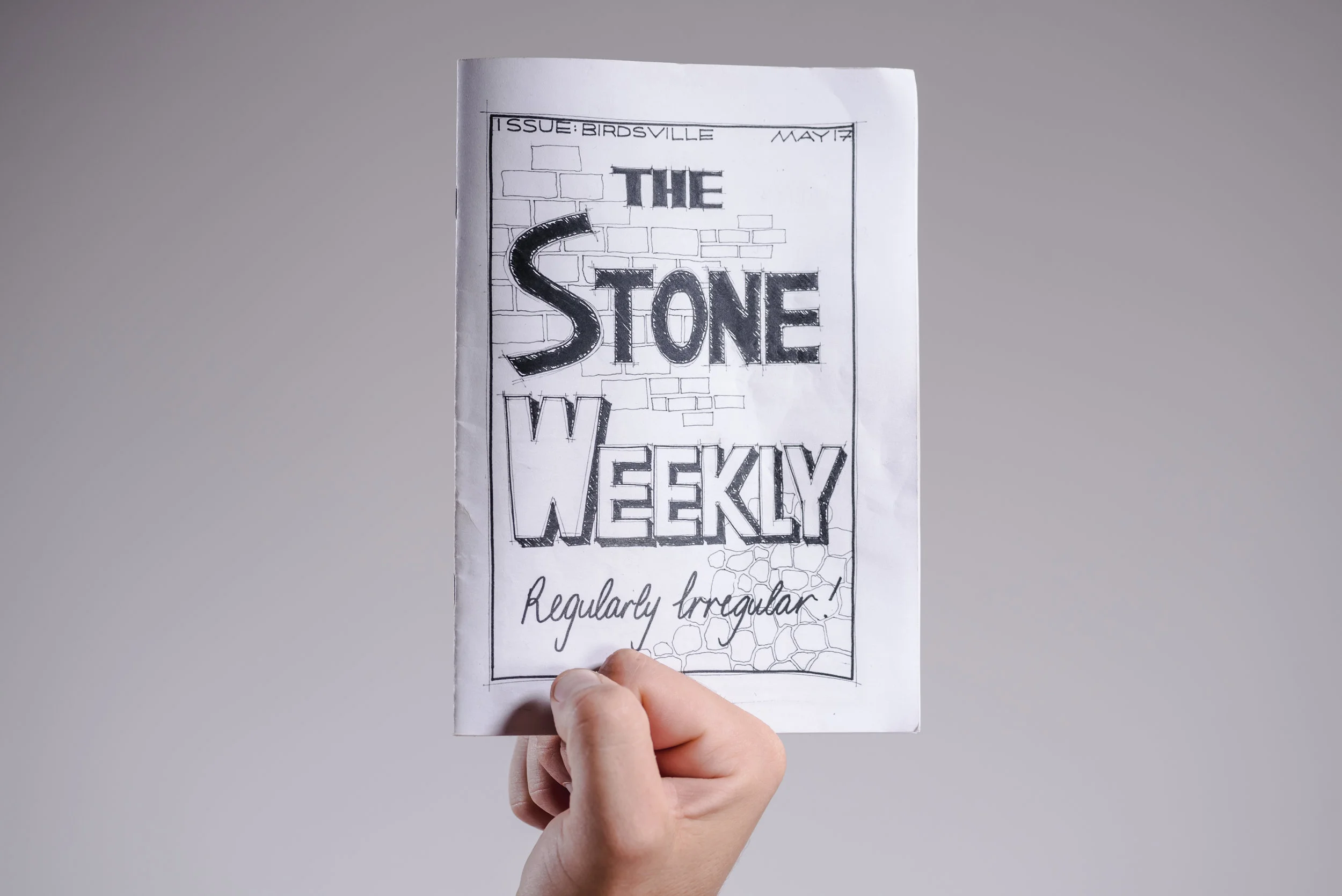






















CLICK ON THE IMAGE to read more Blog
The Diamantina River catchment, all 158,000 km2 of it, drains this already dry land, eventually ending in Lake Eyre to the south west, on average every 8 years. This river system is made up of permanent water holes in dry periods (sometimes years) but if there is rain it can be a river that is 10 kilometres wide, this is ‘the channel country’. This ‘boom and bust’ cycle means plants have adapted and formed remarkable strategies to cope without water and respond rapidly when water is available. Just like the plants, Birdsville adapts to the tourism cycles. The amount of infrastructure in the town is significant; huge amounts of demount-able shower blocks and cabins, ready to cope with the flux in population once a year. The UV out here is the killer. Materials need to be constantly maintained and sealed, those not maintained, especially timber and clothes, just decay. The secret weapon here is stone. Birdsville had some incredible stone architecture that we found particularly interesting. But, why had we not seen stone used so prolifically before now?
read more by CLICKING ON THE IMAGE

Stone!! It’s everywhere out here. High thermal mass buildings in hot climates, read our Zine to find out more CLICK ON THE IMAGE
• Traditional owners = Wangkangurru & Yarluyandi
• Channel Country biogeographic region
• Mean annual temps; H - 31.6 L - 16.8
• Mean annual rainfall; 140mm
• Population; 140 7000
• Elevation; 46 m
• Concrete apparently is roughly $660/m3 (compared to $110/m3 on the coast)
• Although dry country, the Diamantina is considered some of the best cattle fattening country in Australia. “it’s the sweet grass”
• The Mithaka mob are doing some incredible ‘stoney’ archaeological research east of town...

It’s easy to think that the red dirt of Australia’s inland is all pretty much the same. Collecting these vials showed to us how wrong we were.

We were asked to go out on an archaeology dig east of Birdsville with the Mithaka mob and some amazing researches. This tape is used to highlight any possible artefacts.

Stone from a local quarry. We were told that you can tell when it’s going to rain by amount of water present in the gypsum and was used by aboriginal rain men to predict the weather.

Otherwise known as a “gibber” these high iron content rocks cover huge distances in phenomena known as “gibber plains”. Smooth on one side from the wind and sand and rough on the other from being in the ground.

Naturally occurring tessellation of stones. These go on as far as you can see in all directions.

Always the first stop when we would ride into a town. 2 beers, a coke, 4 slices of white bread and butter, chips and gravy. Works everytime.

Lightweight structures like Donga’s rely heavily on mechanical heating and cooling in harsh climates.

Accessible from the outside of the cell so maintenance can be carried out without disturbing the inmate.

This is an example of indigenous architecture from the area. A heavy mud dome would be used to regulate temperature. A fire could even be lit inside with the heat being absorbed by the ceiling so that on cold nights it would stay warm.

This is a contemporary example of high thermal mass construction. It is great to see it being brought back. Talking to the owners it doesn’t do too well in summer as it absorbs too much heat. Maybe some larger eaves could be added to combat this?

Contemporary use of the bough shade to provide dappled shade and allow movement of breezes.

Another building using high thermal mass but this time (mostly) protected from the outside elements.

On-site with archaeologists when we were invited to go check out some amazing archaeological finds east of Birdsville. This is a pre-European male…judging by his teeth…we were told.

Part of camping out every night is become very aware of your surroundings. This included the different ways woods burned. For example Gidgee burns very hot and slow and breaks down into large coals whereas, Mulga burns super hot and quickly and burns down to almost nothing. We heard stories of expert bushmen and women who could boil a billy with next to no timber and not even leave a trace of a fire. We are not there yet….

Every so often we would come across an abandoned building, some were from the train line, some from past-wealthy cattle barons. Many of them used local materials and were incredibly well built. The slow growing hard timbers of the area provide excellent material for longevity. Note the exposed timber in the door frame so that boards could be fixed to the stone work.

This day was significant because we couldn’t find shade for our lunch break. The landscape seemed worn, gasping for breath. It’s bloody hot out there and only gets harder the longer you spend in it.

The flat country gives you access to the sky, it’s changing patterns and it’s infiniteness with the horizon. To be able to see the colours change indiscernibly across the whole hemisphere above you is grounding and joyus.